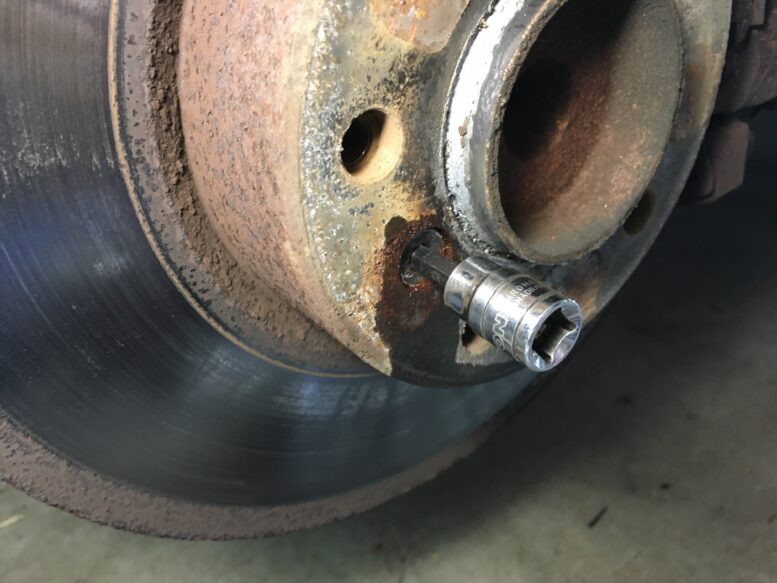I routinely describe my 2003 E39 530i stick sport as the best daily driver I’ve ever owned. Unfortunately, it’s a somewhat neglected car, only getting metaphorical grease when the metaphorical wheel gets very squeaky (as the physical wheel did two weeks ago when it was about to fall off).
As part of my deal with myself that I could skip the Vintage in Asheville this year as long as I was hyper-productive at home, I addressed two issues on the E39 that had reached the point where my wife noticed them when she was a passenger in the car.
The first was the front rotors. When I bought the car seven years ago, it had been sitting for about a year, so the rotors were trashed with both rust as well as deposits from where the pads had stuck during its dormancy. It’s often said that if you feel a pulsation in the brake pedal or a vibration in the steering wheel when you hit the brakes, “the rotors are warped.” That’s usually not true—brake rotors are pretty thick and don’t easily “warp.” The vibration or pulsation is usually due to something on the surface of the rotors, and if the car sat for any significant length of time, the combination of surface rust and residue from the pads having stuck is the prime suspect. I replaced the rotors and pads at all four wheels seven years ago, and the problem went away.
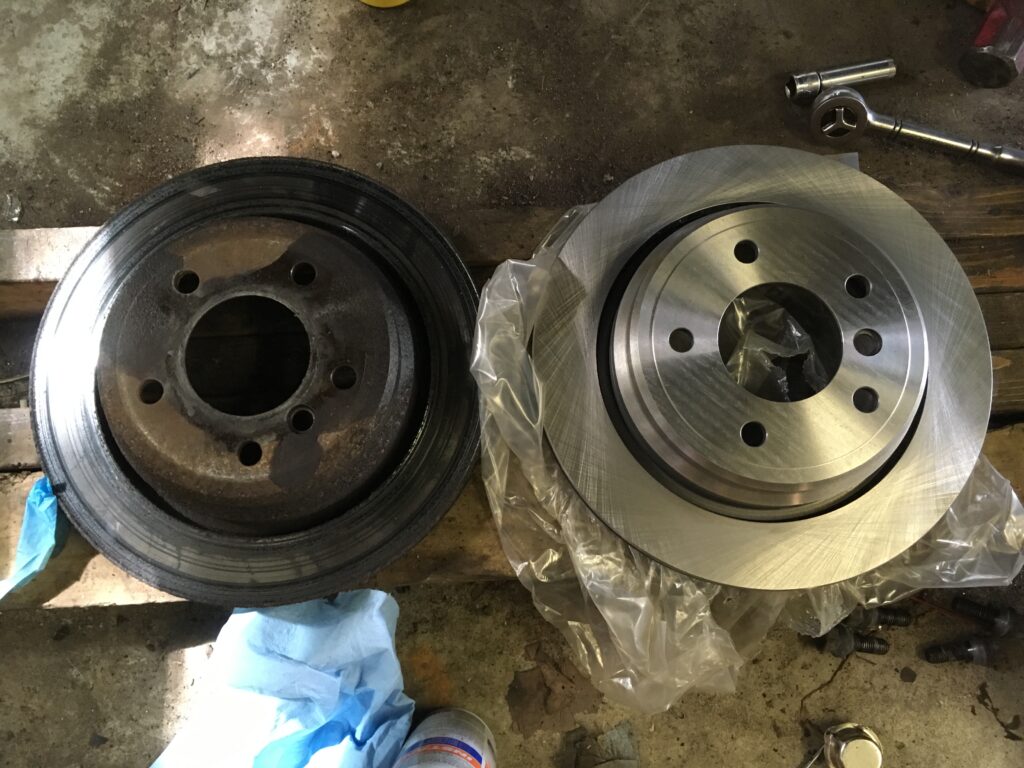
Old and new rotors in 2016.
But shortly before the pandemic, I bought Bluto, the 2004 X5 triple unicorn (six-speed, sport package, dealer-installed towing package), in an attempt to see if a single BMW could transform itself like a Swiss Army knife into an enjoyable daily, a stuff hauler, and a tow vehicle. But my deal with myself was that if I was going to daily the X5, I needed to really daily it, so as the thrifty soul that I am, I pulled the E39 off the road and transferred the registration, plates, and insurance onto the X5. I never really warmed to Bluto—the M54 engine and the interior felt very familiar, and the six-speed was cool, but it was simply too pumped-up for me to enjoy it. I was relived when I sold it and went back to driving the E39. By this time, though, the E39 had been sitting for almost nine months, so not surprisingly, when I began driving it again, it had a significant brake pulsation.
Now, this is pretty common when cars sit outside for even a few months over the winter, and usually a few good panic-stop-like applications of the brake pedal will wipe the deposits and most of the rust off, and regular driving will often do the rest. I did that with the E39, and it improved, but some pedal pulsation remained. At the time, I jacked up the car, pulled off the front wheels, located the imprint from where the pads had stuck on the outer faces of the rotors, and cleaned it off with a Scotch Brite wheel on a drill. This knocked the pulsation largely into the background. However, the over the past few months, pulsation became noticeably worse. Brake pulsation can also be due to worn ball joints or bushings on the lower or upper control arms, but both of those had been replaced in recent years.
One of the things I often write about is “the rhythm of repair”—the dynamic where you need to choose whether to begin pulling things apart in order to verify the source of a problem and accumulate a complete parts list, or are certain enough of the cause that you jump straight to ordering the parts and don’t begin dismantling things until you have them. In this case, recalling the car’s sit during the X5 experiment, I didn’t even bother to examine the rotors—I just hopped on rockauto.com and found a close-out special on a Centric 90834064 front brake kit with front rotors and semi-metallic pads for $84 shipped.
When the parts arrived, I jacked up the car, set it on stands, and pulled off the wheels. The front faces of the rotors looked about as I expected—certainly not track-worthy, but not an act of negligence either.
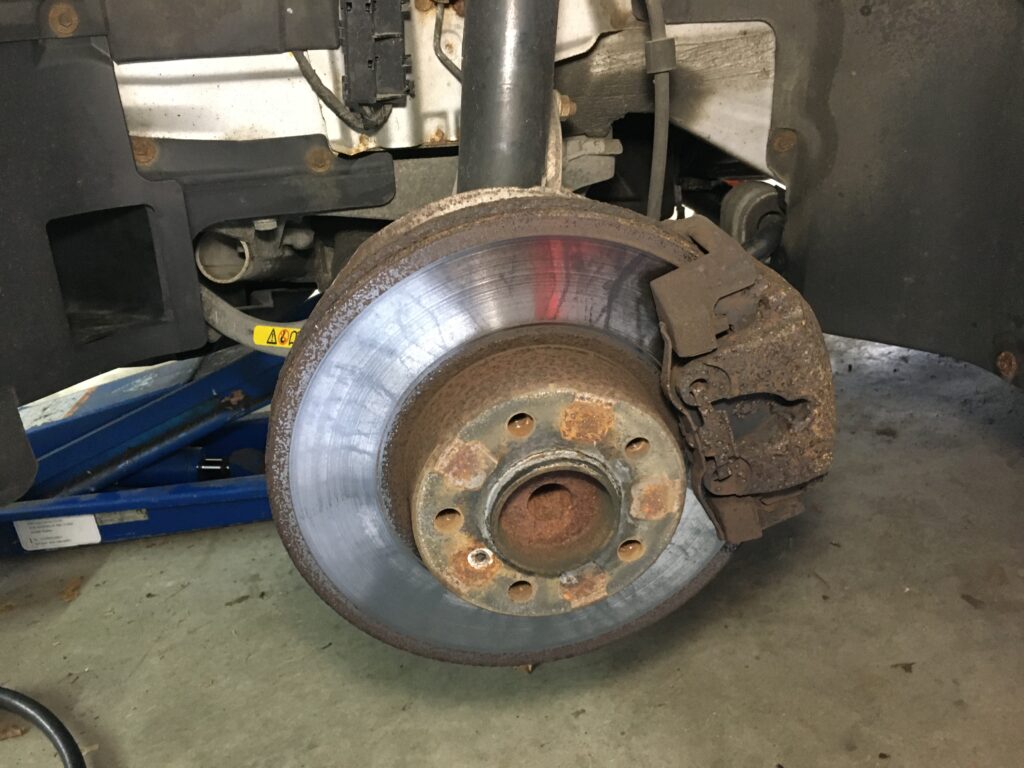
I’ve seen worse.
I pulled off the sliding part of the caliper, then the bracket. An impact wrench made short work of the Allen-head bolt holding on the rotor (and the fact that I’d coated it with anti-seize paste seven years ago certainly helped). Off came the rotor. I flipped it over, revealing… horror.
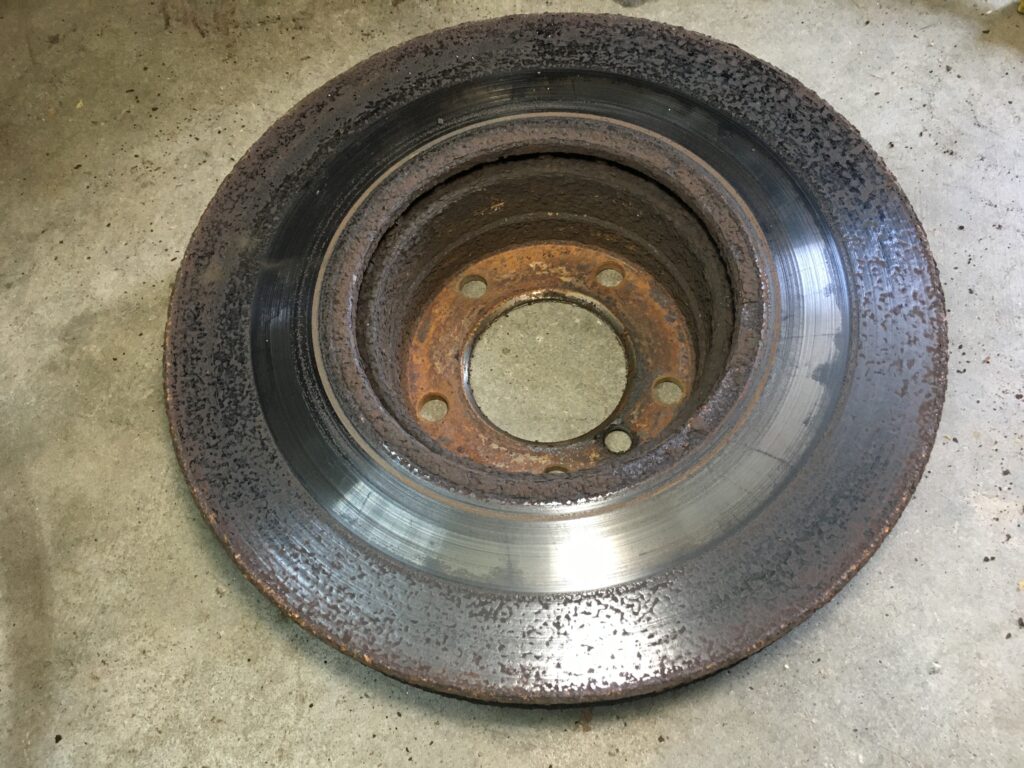
Egad! That IS negligence!
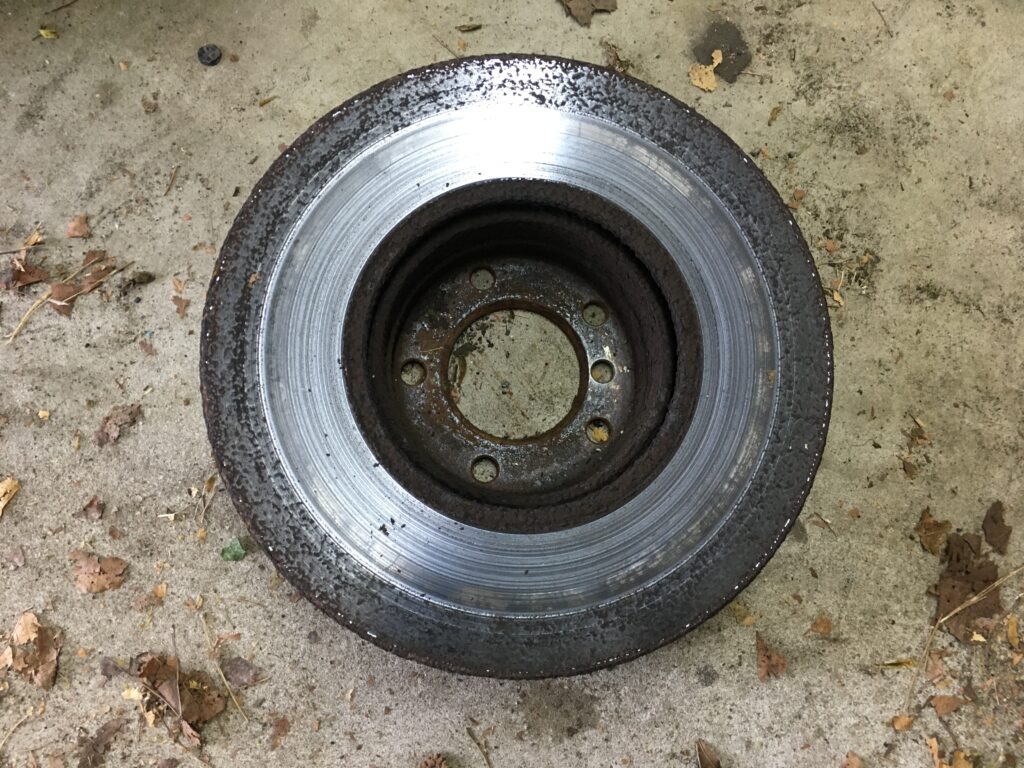
The back of the other rotor wasn’t much better.
On went the new rotors and pads. For $84 and a few hours of my time, the problem was completely solved. The stain of my negligence, however, remains. And yes, I’ll give a look at the ones in the rear.
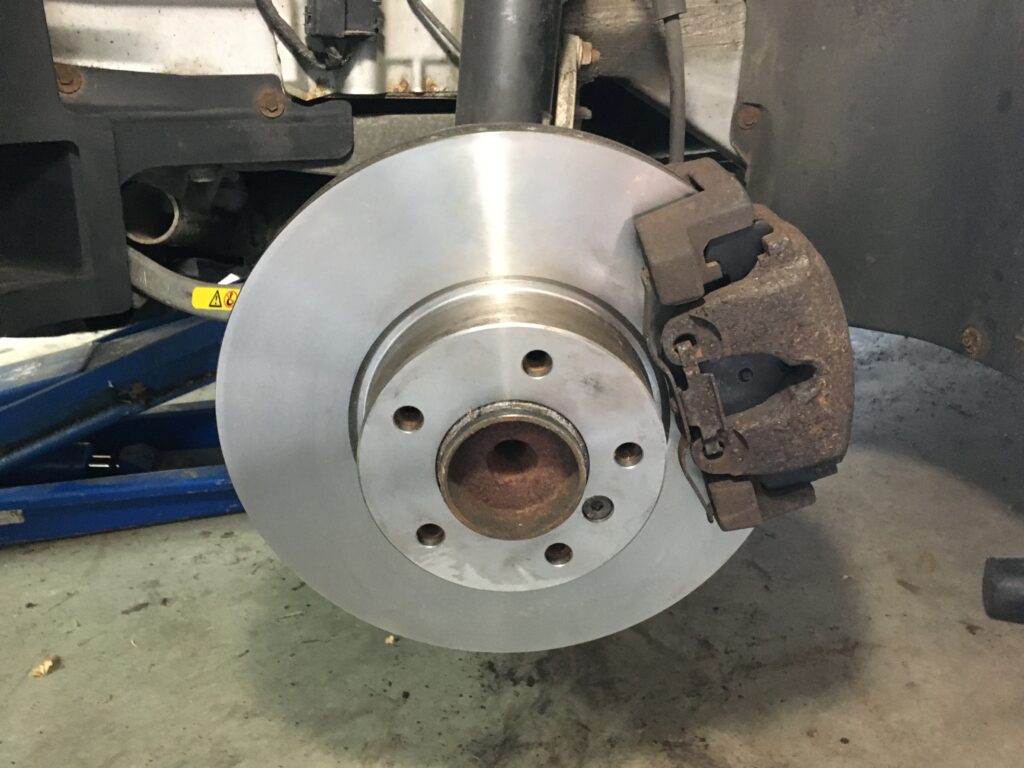
Now THAT’S much better.
The next issue was a worsening oil-burning smell when the car was idling. I’d noticed it and assumed it was oil leaking out the valve cover gasket, but as it dissipated once the car was in motion, I didn’t put any particular urgency on it. My wife, however, has an exquisitely sensitive sense of smell, and when she got in the car, she immediately hit the recirculation button on the climate control. As we are likely using the car on Memorial Day to visit some friends in New Hampshire, I felt duty-bound to address the issue. Rhythm-of-repair-wise, I gave the engine compartment a cursory examination, saw wet oil on the exhaust manifold shields, and ordered an Elring valve cover gasket set from FCP Euro ($34 shipped).
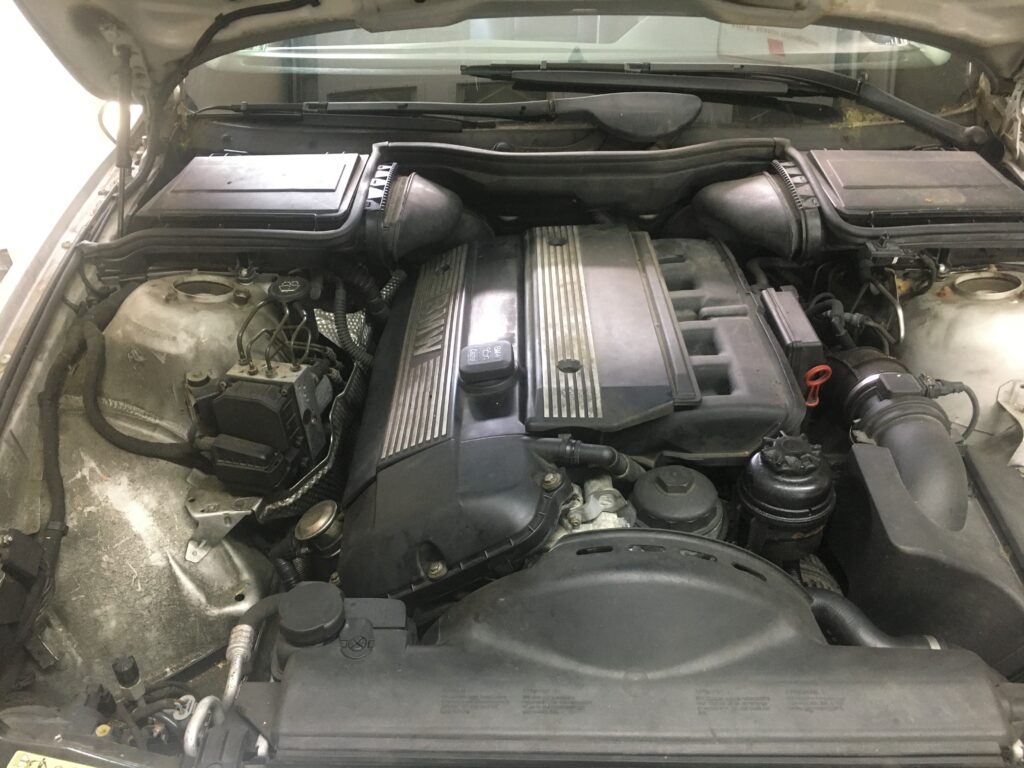
Yes, all that oil on the passenger-side inner fender had clearly been accumulating for a while.
I hadn’t replaced one of these in a while, and was glad that it was trivial. Pull the elbow to the passenger-side cabin filter off, remove the two ribbed false covers, blow/wipe any stray dirt off, pull the stick coils, undo a bunch of 10mm fasteners, undo the snap-on hose that comes up from the oil separator, and off comes the valve cover.
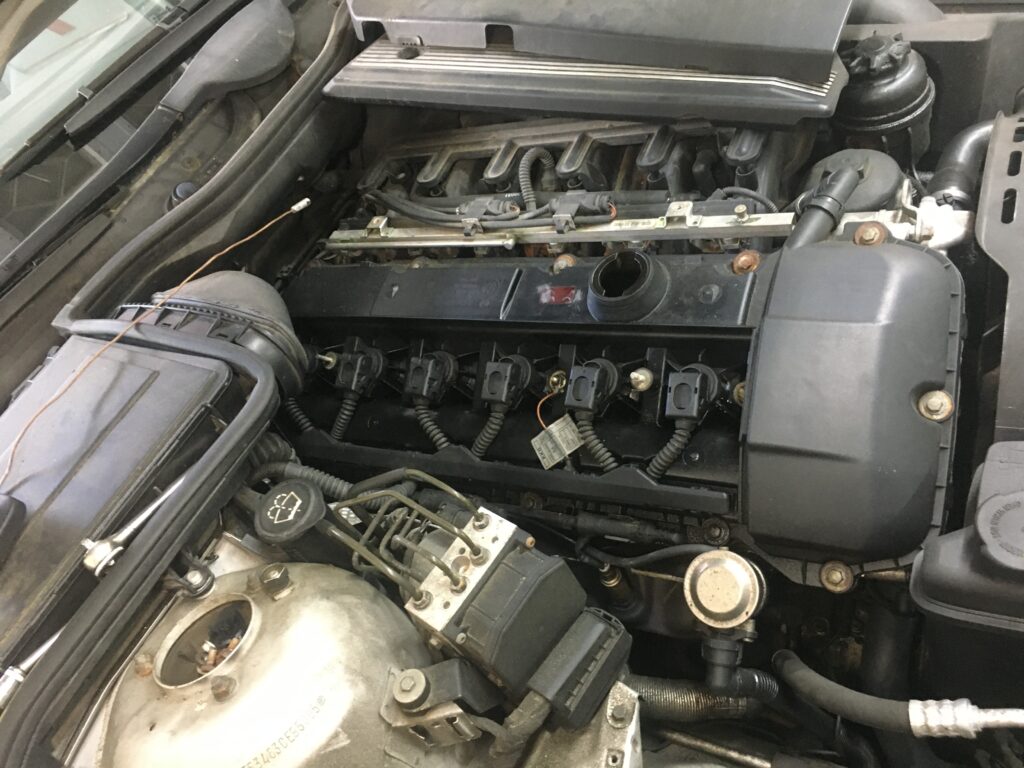
Ribbed cover off revealing the stick coils…
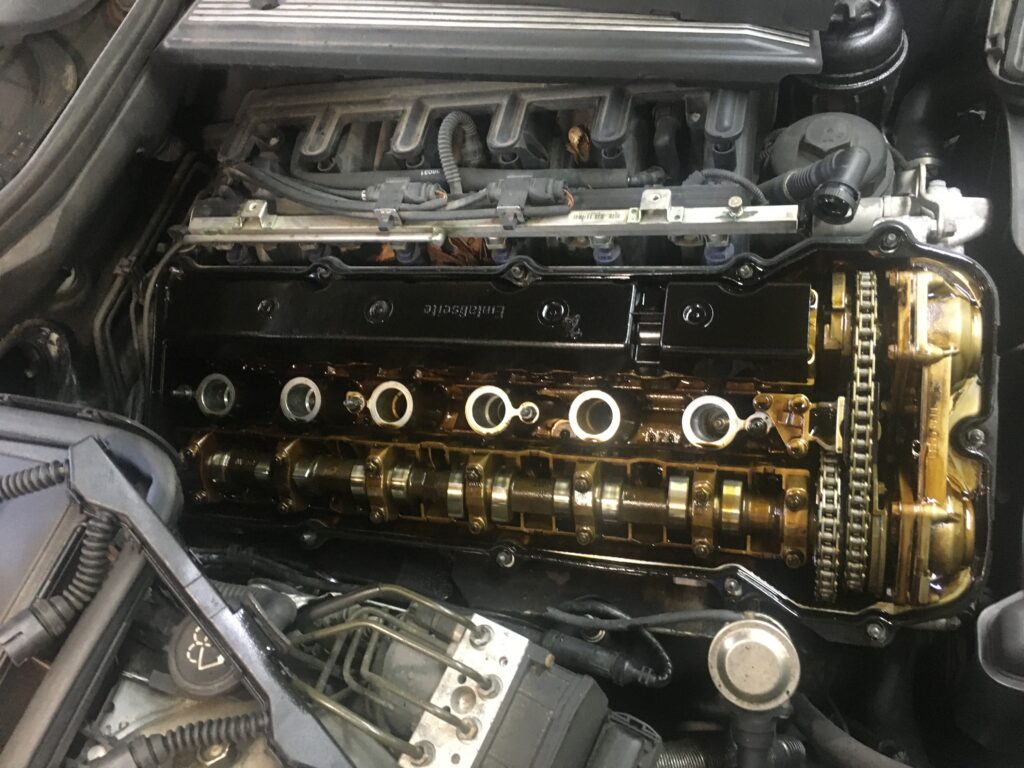
…and the valve cover off revealing the valve train itself.
Particularly in a car like this one that was neglected when I bought it and for which I haven’t exactly been a knight in shining armor of maintenance, it’s reassuring to pull off the valve cover and not see what looks like someone dumped a gallon of Gulden’s mustard or redirected a sewage pipe into it. I cleaned the inside of the valve cover and the mating surfaces on the edge of the head, and replaced the main big floppy rubber gasket as well as the two plug-hole gaskets.
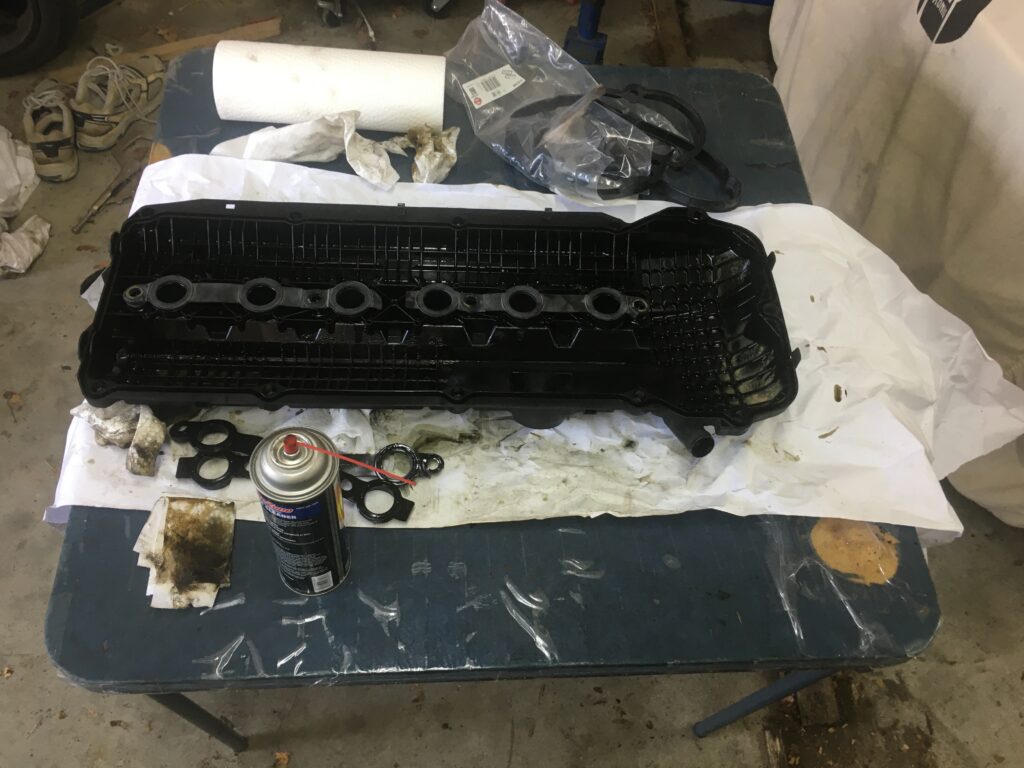
Yes, a fold-up card table passes for a work bench in my space-limited garage.
I then installed the cover with fresh rubber grommets around the 10-mm bolts, cleaned the old oil off the exhaust manifold shields, and drove the car. It took a while before all the old oil burned off, but the smell is now gone, and my wife’s sensitive nose is again at peace.
As I’ve long said, there are few things that feel better than completely solving an automotive problem. Knocking off these two easy and inexpensive repairs felt great. Maybe I’ll continue. Yeah. I could fix the trunk that needs to be manually unlocked with the key. And the wonky supposedly-rain-sensing wipers. And the mirrors that no longer dip in reverse. And the stereo’s unreadable pixel display…
If I keep this up, I won’t make the Vintage next year either.—Rob Siegel
____________________________________
Rob’s newest book, The Best of The Hack Mechanic, is available here on Amazon, as are his seven other books. Signed copies can be ordered directly from Rob here.

